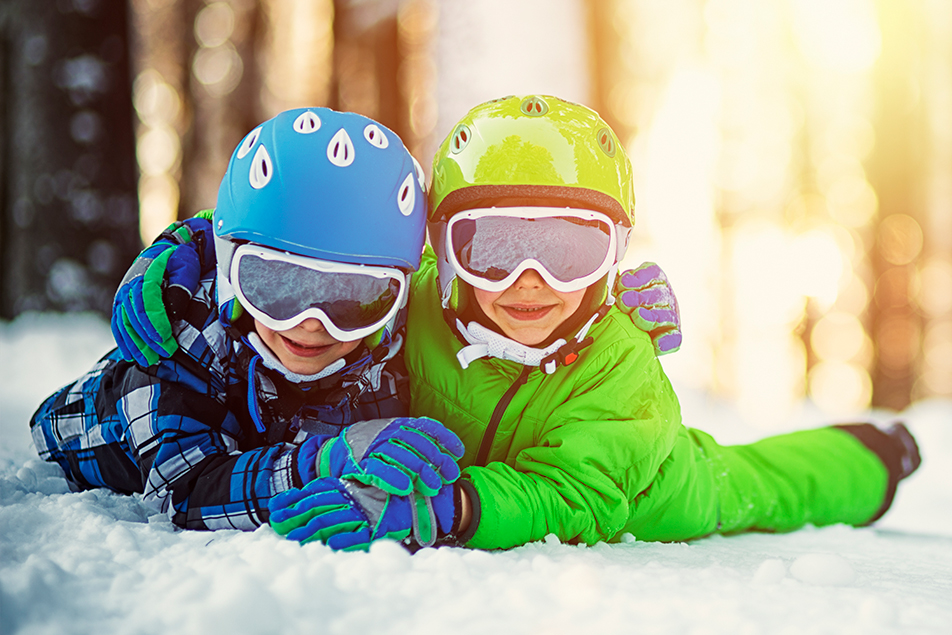There’s nothing quite like a snow day when you’re young. The epic sledding slopes and snowball fights are a welcome reprieve from winter’s typically unpleasant circumstances. But of course the cold can also bring a unique set of hazards. Kellie Girardot, BSN, RN, trauma clinical nurse specialist fellow, Trauma & Acute Care Surgery Services, offers these essential tips for parents as the Midwest’s snowy season continues.
Q. Which activities require child to wear a helmet?
According to helmet standards, skiing and snow tubing (ski helmet), and snowmobiling (snowmobile helmet). I would also recommend ice skating (bicycle or hockey helmet) and sledding (skateboard or ski helmet).
Q. How long is it safe for little ones to be outside?
Use the wind-chill factor to determine if it is safe to play outside and how long:
-
Wind-chill factor 32 degrees Fahrenheit and above – safe to be outside
-
Wind-chill factor 13-31 degrees – take indoor breaks every 20-30 minutes
-
Wind-chill factor below 13 degrees – stay inside
Q. What is the safest way to dress children to play outside?
A good rule of thumb for older babies and young children is to dress them in one more layer of clothing that an adult would wear in the same conditions.
Recommended layers for kids:
-
First layer – thermal underwear, sock liners, wool socks, and glove liners
-
Second layer – turtleneck, sweater or vest, and sweatpants or ski pants
-
Third layer – water-resistant jacket, hat, mittens, neck gaiter, and waterproof boots (Scarves are not recommended due to choking hazard if caught on objects).
Babies/infants should only be out in very cold weather if absolutely necessary. Ensure fingers, toes, ears, nose, and chin are covered, but that he or she can still breathe easily. Never place blanket, snowsuit, or heavy coat under the car seat straps as the extra inches can cause devastating injuries in a car crash.
Q. What are the proper safety precautions when sledding?
-
Children should be supervised
-
Younger children should be separated from older children
-
Make sure area is free of trees, posts, and fences and that the space ends in a flat, open space – not a street, parking lot, or pond/lake
-
Sled slopes should be covered in snow (not ice) and not be too steep (slope < 30 degrees)
-
Child should sit facing forward (never headfirst)
-
Use steerable sleds, not snow disks or inner tubes
-
Sleds should be structurally sound and free of sharp objects and splinters
Q. What’s the most effective, and safest, way to warm a child after they’ve been out in the cold?
If the child has shivering, goosebumps or numb hands, bring them inside, out of the cold. Remove wet clothing. Encourage child to move around and drink a hot beverage to help warm up.
If the parent notices signs of hypothermia, they should call 9-1-1 immediately, make sure the child’s clothes are dry and wrap them in layers.
-
Signs of hypothermia in child: intense shivering, lack of muscle coordination, lethargy, confusion, drowsiness, unconsciousness
-
Signs of hypothermia in infant: bright red cold skin, low energy, lack of appetite
Sources
American Academy of Pediatrics
National Weather Service
United States Consumer Product Safety Commission




